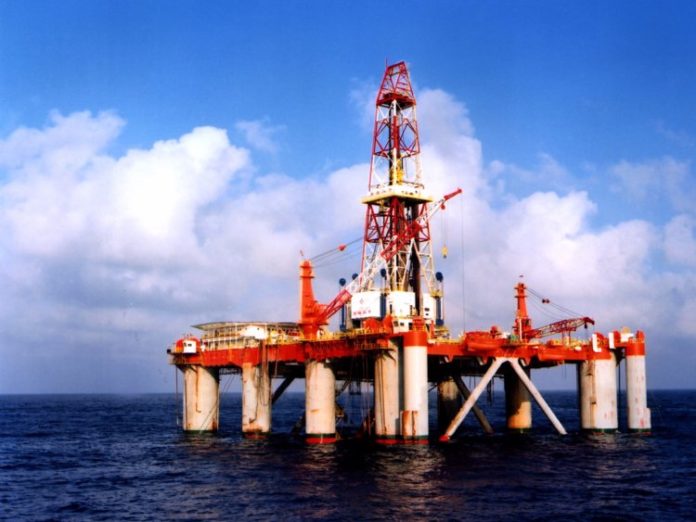The Organised Private Sector, OPS, has reacted to Friday’s sharp decline in prices of crude oil, saying that this will put the economy at significant risk.
The reaction followed sharp drop in oil prices yesterday which fell to their lowest levels in more than a year, deepening a rapid seven-week sell-off that has plunged crude futures deep into a bear market.
Friday’s declines further ramp up the pressure on the Organisation of Petroleum Exporting Countries, OPEC, ahead of a much-anticipated meeting between oil cartel and its allies in Vienna on December 6, when they are expected to announce that output will be curtailed.
So far, the prospect of the Middle East-dominated group orchestrating a fresh round of supply cuts has done little to prop up crude futures.
International benchmark Brent crude dropped $3.52, or 5.6 per cent, to $59.08. The contract hit $58.92, its lowest level since October 27, 2017, earlier in the session.
U.S. benchmark West Texas Intermediate crude fell $3.59, or 6.6 per cent, to $51.04. The WTI briefly slid about 7 per cent to $50.60, its weakest price since October 12, 2017
The WTI has now lost 34 per cent of its value from its peak on October 3 to the trough on Friday, while Brent has fallen as much as 32 percent.
“I have to say that the speed in which the oil market has declined has surprised me even as OPEC and non-OPEC members discuss a production cut,” said Andrew Lipow, president of Lipow Oil Associates. “The market does not think it will be enough.”
The latest wave of energy market selling comes amid escalating concerns about an increase in global supply and a slowdown in economic growth.
Saudi Energy Minister Khalid al Falih had on Thursday said the kingdom’s output this month would surpass October’s production of 10.6 million barrels per day, bpd.
That is near an all-time high but below the 10.7 million bpd guidance for October that Falih announced last month. Falih also said in October that November output would hit 11 million bpd. Sources told Bloomberg News this week the Saudis are currently pumping a record 10.8 million to 10.9 million bpd.
Falih on Thursday said demand will be lower in January and the kingdom will respond to weaker consumption. The minister has already warned Saudi oil shipments will fall by 500,000 bpd in December.
Falih pinned the anticipated drop in demand on the Trump administration allowing some of Iran’s biggest customers to continue buying the nation’s crude despite U.S. sanctions on the Islamic Republic.
Saudi Arabia and other producers increased output earlier this year in anticipation of the sanctions, but the waivers mean fewer Iranian barrels came off the market than expected
The Director General, DG, of the Lagos Chamber of Commerce and Industry, Muda Yusuf, in response feared that the decline is likely going to affect the country’s foreign reserve since the economy is largely dependent on oil revenues.
Yusuf in an interview with our Correspondent in Lagos, said the situation is also going to trigger inflation as exchange rate would be affected.
This he said would affect the purchasing power of the people as cost of goods and services would jump up.
His explanations is that manufacturers depend on foreign exchange to import raw materials for their productions and weak naira would escalate the cost of dollars.
The DG, however, stated that the positive side of the crashing price may only bring down the price of diesel and reduce cost of energy since a large percentage of manufacturers generate their own power.
Nevertheless, he observed that the negative impact of the situation would overwhelm its positive side because of the structure of Nigeria’s economy.
Meanwhile, U.S. crude production has reached 11.7 million bpd, according to preliminary weekly figures. Russia has also been producing at post-Soviet era highs above 11 million bpd in recent months.
The recent downtrend in oil prices has most definitely taken “some by surprise,” Tamas Varga, senior analyst at PVM Oil Associates, said in a research note published yesterday.
“The question is How much longer are bears able to keep firing?” Varga said.
Global oil supply has surged in 2018, with the International Energy Agency recently predicting non-OPEC output alone would climb by 2.3 million barrels per day (bpd) this year. That is an increase of half a million bpd when compared to the group’s forecast from six months ago.
Meanwhile, the IEA expects demand in 2019 to grow at a rate of 1.3 million bpd, down slightly from a forecast of 1.5 million bpd six months ago.
However, on balance, analysts at the U.S. bank said in a research note published Friday that the chance of supply cuts were around “2-in-3.”
“In that scenario, Brent prices likely recover back into the $70s on the other hand, in the 1-in-3 probability that OPEC does not come to an agreement, there is still downside to Brent prices, although probably not much below the high-$50s in the next few months.”
Supply cuts also put the OPEC and non-OPEC alliance on a potential collision course with the United States.
President Donald Trump is publicly in favor of low fuel prices and has urged the group not to reduce crude production next month.
On Wednesday, the U.S. president publicly thanked Saudi Arabia for helping to keep lid on oil prices but again called on the de-facto leader of OPEC to push prices even lower over the coming months.
About two dozen exporting nations began capping their output in 2017 in a bid to drain a global crude glut.
The group relaxed this strategy in June, but in September, some of the world’s leading oil producers were talking about pumping extra oil onto the market in order to help soothe intensifying supply shock fears.










